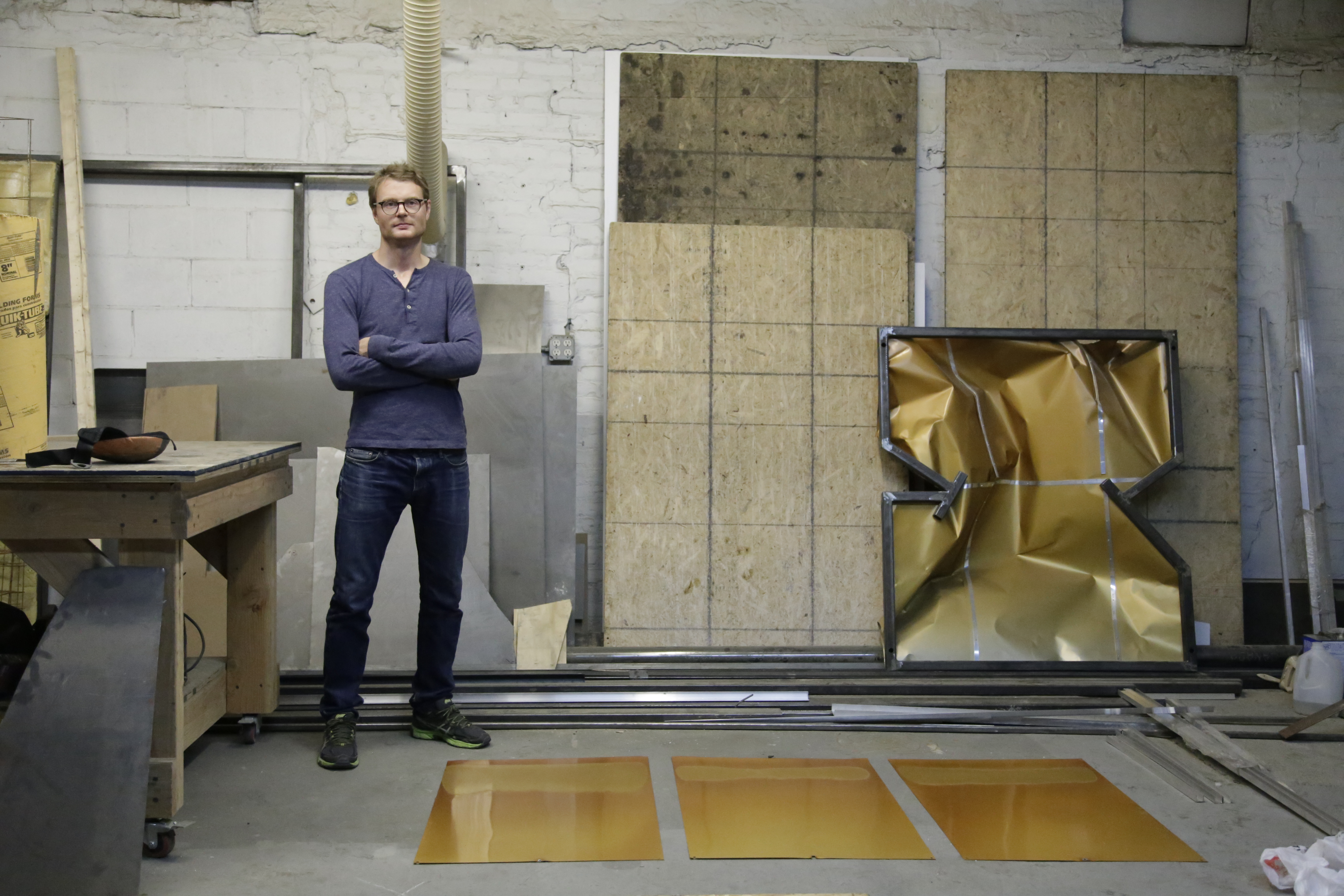
Bodies never lie” is an old saying in the dance world, though it also applies to the art of 29-year- old sculptor Dorian Gaudin. And not just because he’s the son of the highly regarded French choreographer Jean Gaudin, either. “The way I think of animating an object is by trying to find its own personal way of moving,” says Gaudin, as if elegance, slapstick and other expressive bodily motions weren’t only domains of the living.
But then movement—in all of its potential expressions—has fascinated Gaudin since he can remember. Beyond his formative influence of dance, Gaudin also studied animation and engineering before eventually settling upon art as a career. Now based in New York, he’s being hailed as a hot new artist to watch, thanks to an upcoming solo exhibition in February at the Palais de Tokyo in Paris.
In his first solo outing at the Nathalie Karg gallery this past spring titled “Jettison Parkway,” Gaudin wowed audiences with a radiant suite of crumpled aluminum, concrete and steel Born in Paris, Gaudin now works out of his New York studio.

abstractions that evoke both glamorous hot rod accidents and the truth-to-materials forms of the Russian Constructivists. While these arrangements are technically static, Gaudin offers them as a possible “invitation to imagine the movements that initiated them.” In fact, these are the considerations that Gaudin uses to inform his decisions when crafting these roiling compositions in the studio.
The wall works were instantly snapped up by collectors, but the real star of the show was an unusually aggressive sculpture that was almost scarily kinetic: a large aluminum cylinder that propelled itself with a series of gears, both creeping and lunging in succession across the gallery towards unsuspecting visitors. Thanks to its lightweight aluminum body, the risk of injury to gallery goers was nil, but the effect raised the adrenaline levels of anyone who entered the gallery that month.
Gaudin’s debut was followed by an installation at Paris’ Pact Galerie (which was actually a two- person “conversation” with an existing work by artist Gianni Motti) that featured a large aluminum panel Gaudin designed to topple against the gallery wall— only to then right itself before falling again. This raucous exploit happened ad nauseam throughout the run of the show.
Though Gaudin’s art seems unusual at first, it’s good to remember that Paris has a rich history of birthing kinetic work, from early progenitors like American expat Alexander Calder to the country’s own kinetic art stars such as François Morellet. Gaudin of course fits nicely into this historic lineage, while also offering up a contemporary aesthetic (and sense of humor) all his own.
And as for his much anticipated Palais show? Gaudin can’t specifically say what to expect, but he did admit it would be his largest installation to date and that it would be an “immersive situation for the viewer.” The fact that Gaudin couldn’t quite predict what these works would do or look like is just business as usual for this quirky artist. “The result is not so much the answer but my research,” he says, “and ultimately, the object’s own quest to find its identity.”










 in your life?
in your life?

